The Latest from TechCrunch |  |
| Android Catches Up To Palm In Mobile Ad Market Share. IPhone Still Blows It Away. Posted: 23 Apr 2009 08:55 AM PDT
Android is making steady gains in mobile ad market share, accounting for 6 percent of all mobile ad requests measured by AdMob in its latest March metrics (full report embedded below). That puts it neck and neck with the Palm OS, compared to a 5 percent /7 percent share split in favor of Palm just one month before.. Windows Mobile Devices also saw a share decline from 13 percent to 11 percent, while Blackberry’s RIM OS gained a point to 22 percent, and the iPhone stayed the same at 50 percent. AdMob measures ad requests from both mobile browsers and mobile apps, thus its numbers are a good proxy for mobile Web usage (minus paid apps which don’t serve ads, of course). On a device level, the Android G1 (HTC Dream) actually overtook the Palm Centro, becoming the No. 4 smartphone in terms of Web usage in the U.S. (after the iPhone, the Blackberry 8300, and Blackberry 8100). But the iPhone still dwarfs Android. As a point of comparison, AdMob measured 72 million ad requests for Android in March, 2009 versus 607 million for the iPhone in the U.S. Wordlwide, the iPhone had 995 million ad requests, and if you combine it with the iPod touch the total grows to 1.66 billion.
But is this even a fair comparison? The number of iPhones out there outnumber Android phones by nearly 20 to one (21 million iPhones have been sold to date, compared to estimates of about one million for the G1). Given these ratios, the disparity in Web usage measured by Admob makes sense. As more Android phones are introduced, that should help its numbers. One major driver of ad requests on both platforms has been the proliferation of standalone apps. Admob measured the growth in ad requests following the launch of each app store on Android and on the iPhone, and found that the growth rate for the iPhone was 88 percent a month versus 47 percent for the Android. But both outgrew other platforms by a wide margin. Once the Palm Pre comes out and the Blackberry App Store gains more traction, it will be interesting to see whether the relative strength of the iPhone and Android continue.
Crunch Network: CrunchGear drool over the sexiest new gadgets and hardware. |
| China Blocks Micro-Messaging Site Plurk. Is Twitter Next? Posted: 23 Apr 2009 07:32 AM PDT
As micro-messaging spreads overseas, the threat of censorship looms in certain parts of the world. Yesterday Plurk, a micro-messaging service that competes with Twitter, discovered that it is being blocked in China. According to Plurk’s lead developer Amir Salihefendic, “We at Plurk still don’t know why we are banned and we did not get any warnings from the Chinese government or have been in contact with them.” But a quick test confirms that the site is not available in China.
Plurk is a micro-messaging site where each message appears on a timeline. It never really caught on in the wake of Twitter, but it does have a core group of loyal follower, and is showing some very early growth. Plurk seems to be hitting a chord in Asia though. It is like the Friendster of micro-messaging services in that regard. The top five countries where Plurk’s traffic comes from, according to Google Trends for Websites, are Indonesia, Taiwan, the Philippines, the U.S., and China, in that order. China is No. 5. Salihefendic says that Plurk has “tens of thousands” of active users inside China and “hundreds of thousands” of unique visitors, “so this is a big issue for us.” So even if you have never heard of Plurk, it appears that the Chinese authorities have and they don’t like what they see. Is this an isolated incident, or is this what the Chinese government has in store for Twitter as well?
Crunch Network: CrunchBase the free database of technology companies, people, and investors |
| YouTube Starts Rolling Out Video Download Program For Partners Posted: 23 Apr 2009 06:47 AM PDT
As we noted earlier when we first caught wind of the download service, selected YouTube partners can offer their video downloads for free or for a fee (determined by the partner), paid through Google Checkout. Most videos in the test charge about $1 each. The partner can also decide how the downloadable video will be licensed to the user - whether it will be restricted to a private non-commercial use video, or whether it can be used under Creative Commons. It’s not entirely clear if Google / YouTube is currently taking a cut on the for-fee downloads during the test period, but it will most likely do that at some point if it isn’t already. Recently, Crédit Suisse analyst Spencer Wang estimated that the video site will lose approximately $470 million this year alone (although we should note that another analyst, Youssef Squali from Jefferies & Co., predicted YouTube revenues to amount up $500 million in 2009). Either way, in this economy, YouTube needs to be monetized as much and as soon as possible, and the video download option is just another way the company hopes to generate income from the popular site. Other steps it has taken up until now include YouTubevertorials, selling search results, and ad revenues from big content partners.
Crunch Network: MobileCrunch Mobile Gadgets and Applications, Delivered Daily. |
| The State Of The iPhone Is Strong — Very Strong Posted: 23 Apr 2009 02:22 AM PDT
Yes, Apple actually sold less iPhones this quarter than the previous two quarters, but that was coming off of the always-hot holiday shopping quarter, and the one before that was when the iPhone 3G was still relatively new on the scene. All told, Apple has sold 21 million iPhones since its launch. Perhaps just a drop in the bucket compared to overall Nokia sales, but remember, Apple was not in the mobile business at all before 2007. And aside from just sales figures, in the past two years, it has revolutionized the industry. That is, of course, a cliche. But in this case, it’s true. People can downplay the actual number of iPhones in circulation all they want — the fact of the matter is that it has changed things. While there were some third-party mobile app developers before Apple’s App Store, they received almost no attention, and as such, it wasn’t really a viable business. Now, everyone and their mother is flocking to develop for the App Store. And every major mobile player is rushing to make their own app stores. But Apple’s already has over 35,000 apps — and in a few short hours, there will have been one billion apps downloaded in just 9 month. Think about that for a second: One billion apps downloaded. There are currently 37 million iPhones and iPod touches combined. Certainly, there have been a lot less than that over various stages in the last nine months, but just take that 37 million number. That means that every single one of those devices has had an average of 27 apps downloaded to it. 27 apps — that do everything from games to music to movie times to fetching me a taxi. I remember the phone I had before the iPhone, fondly: Motorola’s RAZR. It had zero third-party apps, and the most exciting thing it could do was take a grainy picture. That was just two years ago. Look, Apple’s iPhone platform is not perfect. The app approval process, to put it lightly, sucks. There are apps getting rejected for questionable reasons, that are forced to wait weeks to just be reviewed again. And then there are other apps which feature outrageous things, which get accepted without the slightest peep. Apple needs to revamp this system. And the network is far from perfect as well. AT&T seems to have a failure rate that is unacceptable to a lot of people. Some have gotten rid of their iPhones just to ditch AT&T.
And thanks in no small part to the iPhone, that could be about the change. Google’s Android platform was long seen as the next big thing, but so far, the only phone to run it, the G1, is junk. That should, hopefully change before the end of this year when new Android phones hit the market. But before then, the first real challenger should be coming — perhaps next month — with the Palm Pre. I’ve known a few people who have used the Pre a bit, and the consensus seems to be that it is the first true competitor, in terms of experience (both hardware and software), to the iPhone. But it has some major handicaps — ones that I’ve already mentioned: 21 million, 35,000, and 1 billion. The iPhone has established itself as the standard that all mobile platforms now aspire to be. And with so much developer mindshare tied up in the platform, it will be hard for any other to come along and compete. The Pre, simply put, has to actually be better than the iPhone, if it wants to stand a chance. For a while, it seemed like that would be the case. When the Pre was first unveiled, major hype immediately began. It had all the features the iPhone didn’t. But Apple isn’t stupid. It didn’t rush out with a buggy software update to match all the features. Instead, it sat back, worked, and then dropped the iPhone 3.0 software bomb. Not only does its update coming this summer include many of the features the Pre was touting as advantages, but it has a lot more that the Pre doesn’t offer. And the Trojan Horse, that not a lot of people are talking about yet, is that the 3.0 software’s micro-payments system (In-App Purchases) could take the iPhone to an even higher level in terms of developer commitment. It could represent a whole new level of money for them — and Apple. Oh yeah, and there is likely new iPhone hardware coming shortly as well. Of course, there are still two major differentiating factors that the Pre will offer: a physical keyboard and background applications. To me, the physical keyboard argument is a short-term one. Yes, a lot of people right now insist on having a physical keyboard — something which Apple has refused to provide. But Apple is doing that because it knows that they are not in the cards for the future of mobile devices. In the not-too-distant future, there will be screens with full haptic feedback and let you orient your hands on them. Physical keyboards will be seen for what they are: A huge waste of space. The larger issue is background applications. Apple still refuses to run them (from third parties). You might think this is an obvious advantage for the Pre, but there are some major potential downsides. One is performance. How will the device run when multi-tasking? But the larger issue is battery life. I have a G1 that runs applications in the background. The battery life is a joke. If you think the iPhone has a poor battery, try using the G1 for a day. Or should I say, try using the G1 for about 3 hours. Good luck.
And so, I have my doubts about the Pre’s main advantage, actually being an advantage at all. Again, Apple is a lot of things, but it is not stupid. If it thought allowing applications to run in the background was the best play in keeping customers happy, it would do it. Instead, it went throught the painstaking process of completely redeveloping the Push Notification system to get it working. It seems to say something that now Palm has a similar service it has built into the Pre SDK, called Mojo Messaging Service. Apple, with its still relatively small overall market share, is in a position of power right now in the US. If it had an iPhone that was $99 and could run on any major carrier, it would completely dominate this market. Instead, it’s doing things its way — just as it has always done. And that has worked for the iPod, and for iTunes, and has been working the past few years for the Mac. But it leaves a small opening for a nice Android device or the Pre to have a chance. But they can make no mistakes. Or they will be written in the Wikipedia entry for Apple next to the Zune. [photo: flickr/techburst] Crunch Network: CrunchGear drool over the sexiest new gadgets and hardware. |
| Yowza: Matt Parkman From Heroes Has An iPhone App Posted: 23 Apr 2009 02:13 AM PDT  Why wasn't I notified about this? Right around tax time, CG's favorite TV host Cali Lewis interviewed Greg Grunberg, the brain hurting guy from Heroes. Although last Monday's Gollum/Sylar episode was kind of a lump, I always enjoy Greg's brain things and the Hiro/Ando/Matt Parkman baby thing was fun. Best off all, Grunberg is a full-bore geek with his own Twitter account and iPhone app he's trying to pitch. Why wasn't I notified about this? Right around tax time, CG's favorite TV host Cali Lewis interviewed Greg Grunberg, the brain hurting guy from Heroes. Although last Monday's Gollum/Sylar episode was kind of a lump, I always enjoy Greg's brain things and the Hiro/Ando/Matt Parkman baby thing was fun. Best off all, Grunberg is a full-bore geek with his own Twitter account and iPhone app he's trying to pitch. |
| TC/CG Meet-up: Helsinki on April 28? [UPDATE] Posted: 23 Apr 2009 02:00 AM PDT  I'll be in Helsinki next week and I'd like to plan a very informal meet-up on Tuesday, April 28 at about 7pm. All those Finns in favor, please email me at john@crunchgear.com with the subject line "RSVP HELSINKI." I don't have any idea where we could meet - suggestions are welcome - but this would be dinner, drinks, and, potentially, a big, pasty brodeo sauna session at about 2am when everyone is sloshed. I will post an update when we figure out the venue. Your thoughts? UPDATE - How about Korjaamo? Does anyone know anyone there? See you in Helsinki! I'll be in Helsinki next week and I'd like to plan a very informal meet-up on Tuesday, April 28 at about 7pm. All those Finns in favor, please email me at john@crunchgear.com with the subject line "RSVP HELSINKI." I don't have any idea where we could meet - suggestions are welcome - but this would be dinner, drinks, and, potentially, a big, pasty brodeo sauna session at about 2am when everyone is sloshed. I will post an update when we figure out the venue. Your thoughts? UPDATE - How about Korjaamo? Does anyone know anyone there? See you in Helsinki! |
| RubyOnRails.org Domain Derailed By Hacker? (Updated: It Was Just Parked) Posted: 23 Apr 2009 01:48 AM PDT Oops, something went wrong. Looks like a hacker somehow got hold of the domain name RubyOnRails.org and slapped a page filled with ads on it. It looks the former owners are aware of the issue and have already started the process to get the domain name back, so this doesn’t appear to be a simple case of forgetting to renew the domain. (Update: as others have pointed out, it probably is and Softmind could simply blowing smoke) Update 2: yup, the latter. On the other hand, the actual registration date of the domain name (19 April 2004) seems to suggest this would be about the right time for the domain name to expire, so we’re not really sure it’s an actual hack or a simple oversight (it was last updated on 23 April). We’ll update if and when we know something more. Update: RubyOnRails creator and 37signals partner David Heinemeier Hansson claims the registration service ‘fucked up again’ and parked the domain name. I’d suggest switching providers. Why claims of a hack are circulating is still a question mark, we’ll find out soon enough I’m sure.
Before
After
Crunch Network: MobileCrunch Mobile Gadgets and Applications, Delivered Daily. |
| First Look: We Take YouTube RealTime For A Spin Posted: 22 Apr 2009 08:54 PM PDT
Earlier today we reported on YouTube’s plans to roll out a new real-time product that adds a new social layer to YouTube, allowing friends to share the videos they’re watching with each other in real time, without having to turn to outside chat programs or Twitter. I’ve just taken the new product for a spin, and it’s pretty clear this will add another dimension to YouTube’s virality and its role as a social site. Before now, there hasn’t been a particularly compelling reason to establish friends on YouTube, aside from subscribing to videos a user uploads. If you had a funny video to share, it was easier just to do it via IM. RealTime changes that. RealTime appears as a toolbar at the bottom of every YouTube page with three main items. The most prominent button is an indicator showing when you have Realtime sharing turned on, obviously to ensure that you don’t accidentally share some videos you aren’t too proud of watching. The ‘Online Friends’ tab shows which videos your friends are currently watching (if any) and their recent history. It also allows you to send an invitation to come watch the video you’re watching, which will pop up on their screen (you can turn notifications off). This is where the real power of the new product lies, as it allows friends to instantly share videos with each other.  Finally, there’s a button for ‘Watching Now’, which allows you to see any random YouTube users who happen to be watching the same video as you. This isn’t a privacy issue because you’re only shown in the list if you opt-in, but it seems pretty pointless. A chat feature with other users could potentially be entertaining (though I’d hope for some decent filtering given the YouTube comments I’ve seen), but what’s the point of a list of people I don’t know? Aside from that that, I have a few more gripes with the toolbar. Unlike the toolbar on Facebook and some other services, the YouTube toolbar disappears and reappears every time you load a page. This is hardly a game-breaker, but it’s still sort of annoying. I also think that there should be an option to have all of the videos your friends are watching pop up as notifications - in the current version, they have to invite you in order for a notification to appear. But the product is still an early Beta, so there’s still plenty of time for these issues to get squared away. 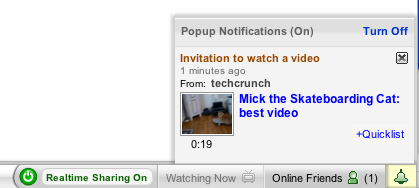 YouTube is using an invitation system to deploy RealTime, which in some ways parallels the approach Gmail took when that product first launched. Every user to get invited gets another 25 invites of their own, which makes invitations hard to come by at first, but sufficiently accessible to allow the service to grow quickly. In order to invite someone to RealTime, you have to become their friend on YouTube - you can’t just send them an Email to activate it. This is a bit of a hassle, but it also gives YouTube a chance to build out its social graph. That said, YouTube could make the process a little less difficult - in the current system, you have to first invite someone to become your YouTube friend before you can invite them to the Beta (you should be able to send a single link that accomplishes both).
Crunch Network: CrunchBoard because it’s time for you to find a new Job2.0 |
| MySpace CEO Departure: The Email To Employees Posted: 22 Apr 2009 05:38 PM PDT
The press release went out an hour ago, and given that internal emails inevitably leak, there’s little additional information here. But at least Miller is giving DeWolfe as graceful an exit as he can. To FIM Employees: I am writing to share the news that MySpace CEO Chris DeWolfe will be stepping down from his executive role in the near future. He has agreed to serve as a strategic advisor to the Company and will remain on the board of MySpace China. In addition, I am currently in discussions with MySpace President Tom Anderson regarding his role within the organization. I want to take this opportunity to thank them both for their incredible contributions to the Company, and for pioneering one of the greatest social media revolutions of our time. I wish Chris nothing but the best in any new endeavors and, like many in this industry, am eager to witness his next innovations. I understand the importance of having a dynamic, inspiring and innovative management team, and am dedicated to ensuring that MySpace continues to benefit from the highest levels of passion and enthusiasm. I also want to thank everyone across FIM for giving me the opportunity to work with all of you. With MySpace, IGN, Photobucket, Fox Audience Network and our Digital Publishing Group, this is an exciting collective of properties and I'm enthusiastic about the opportunities that lie ahead. I hope to meet and work closely with many of you over the weeks and months to come. Best regards, Crunch Network: CrunchBase the free database of technology companies, people, and investors |
| It’s Official: MySpace CEO Chris DeWolfe Steps Down Posted: 22 Apr 2009 05:00 PM PDT
News Corp. is also signaling that cofounder Tom Anderson is staying on board, albeit in a new role - even last night we heard that he was a goner. Whoever the new CEO is, we’ll know soon. News Corp. PR is leaking to their subsidiary press outlets that Owen Van Natta is the prime candidate, but at least a couple of other people are still supposedly in the running. If Van Natta, a former Facebook exec, takes over, the investors that backed him at Playlist are going to want an explanation. He took over the CEO role there less than six months ago. Chris DeWolfe to Step Down as CEO of MySpace Will serve as strategic advisor to Company Los Angeles, CA, April 22, 2009 - MySpace CEO Chris DeWolfe and News Corporation's Chief Digital Officer Jonathan Miller, announced today that, by mutual agreement, Mr. DeWolfe will not be renewing his contract and will be stepping down in the near future. Mr. DeWolfe will continue to serve on the board of MySpace China and will be a strategic advisor to the Company. Additionally, Mr. Miller announced that he was in discussions with Tom Anderson, MySpace's president, about Mr. Anderson assuming a new role in the organization. "Chris and Tom are true pioneers and we greatly value the tremendous job they've done in growing MySpace into what it is today," said Mr. Miller. "Thanks largely to their vision, MySpace has become a vibrant creative community with 130 million passionate followers worldwide. It is an enormously successful property and we look forward to building on its achievements with a new management structure we'll announce in the near future." "In a little under six years we've grown MySpace from a small operation with seven people to a very profitable business with over 1,600 employees," said Mr. DeWolfe. "It's been one of the best experiences of my life and we're proud of, and grateful to, the team of talented people who helped us along the way. We thank them, as well as the MySpace community for making our vision a reality." "From the very beginning, our driving passion has been simple - to create and foster a platform where people across the globe can not only meet and interact, but share music, videos, thoughts and ideas," said Mr. Anderson. I look forward to working with Jon. I love this business, and look forward to its next chapter." Crunch Network: MobileCrunch Mobile Gadgets and Applications, Delivered Daily. |
| The French Come Calling For Wikipedia (Orange Strikes Mobile Deal) Posted: 22 Apr 2009 04:55 PM PDT
France Telecom’s Orange, one of the biggest mobile phone operators in Europe, has partnered with Wikimedia to provide Wikipedia content through co-branded channels on Orange's mobile phones and web sites. Through a revenue-sharing arrangement, the non-profit Wikimedia foundation will get a cut of some of the advertising dollars (or Euros) generated by its content. Orange will create specific Wikipedia content channels on Orange’s web and mobile portals. Orange will also develop widgets to help customers access Wikipedia content directly from Orange’s portals. Initially, the Wikipedia content and widgets will only be provided to customers in France, Spain, the UK, and Poland but will be rolled out to the rest of Orange’s European footprint at a later point. It seems like a good deal for Wikipedia. Orange’s reach is widespread-Orange has 122 million mobile customers, including 26.7 million users that use a broadband wireless connection. Orange says that two-thirds of mobile devices on the market in Europe are web enabled. Wikimedia has dabbled in the mobile space, creating a mobile formatted site. And there are a few iPhone Wiki apps (note, not made by Wikipedia) that let you browse Wikipedia, including ones made by WikiPock (which also donates a portion of its revenues to the Wikimedia Foundation), Powerset, WikiTap, and WikiMobile. Crunch Network: MobileCrunch Mobile Gadgets and Applications, Delivered Daily. |
| Foodista Raises $550,000 From Amazon And Other Angels Posted: 22 Apr 2009 04:41 PM PDT
Amazon is now an angel investor in a company led by one of its former employees. Foodista, which is trying to create an authoritative wiki for recipes, raised a $550,000 series A funding from Amazon and a group of local Seattle angel investors. CEO and founder Barnaby Dorfman was formerly a vice president at Amazon’s A9 search engine, before he left in 2006. Foodista is targeting the growing ranks of food bloggers to contribute recipes and use Foodista as a marketing vehicle to find new readers. To that end it has organized the first International Food Blogger Conference in Seattle in May, which is already sold out (Gourmet editor Ruth Reichl is keynoting). As I described Foodista in my initial review:
The site is built entirely on Amazon Web services (EC2, S3, and Simple DB) and every ingredient, recipe, technique, and cooking appliance is treated as structured data that links to every other mention of that same item on the site, which makes exploring a lot easier. The site’s traffic still barely registers on many measurement services, but is showing some traction. Crunch Network: CrunchBase the free database of technology companies, people, and investors |
| Apple: Want A Netbook? Try An iPhone Or iPod Touch (For Now) Posted: 22 Apr 2009 03:04 PM PDT
Notably, he reiterated Apple’s stance that netbooks, as they exist today, are basically crap. He called their keyboards “cramped,” and their hardware “junky.” “This is not something we would put the Mac brand on,” Cook said. He believes that if people want a small, very portable computer, they should perhaps look at the iPhone or iPod touch. That comment will likely make a lot of people annoyed, but if you think about it, with the increasing numbers of things that those devices can do (and will be able to do with the upcoming 3.0 software), it’s not an entirely ridiculous thing to say. More importantly though, Cook made it very clear that Apple is watching the netbook space closely to see the consumer response to it. “If we find a way where we can deliver an innovative product — then we’ll do that,” Cook noted. He went on to say that Apple has some “interesting ideas” for new products, and that the upcoming product pipeline is “fantastic.” There are no shortage of rumors that Apple is already hard at work on a netbook, a tablet — or both. Today’s comments really seem more so than ever to be Apple stalling by downplaying current netbook offerings by other companies. While both Cook and Jobs have said in the past Apple was looking into the market, today Cook seemed to indicate pretty clearly that we can expect something from Apple in the future. And you can be sure it will be more than a new iPhone or iPod touch. [image via Gizmodo] Crunch Network: MobileCrunch Mobile Gadgets and Applications, Delivered Daily. |
| YouTube Starts Experimenting With Real-Time Notifications Posted: 22 Apr 2009 02:01 PM PDT The real-time web is all the rage, with FriendFeed widely deploying live feeds earlier this month and Facebook working hard on bringing real-time streams to its homepage. Now YouTube is looking to get in on the action, and is currently testing a new feature dubbed ‘YouTube RealTime’, which allow users to see which of their friends are currently online, the videos they’re watching, and comments they’ve left. Updates will be shown in a persistent toolbar, which means that users will be able to see them no matter where they are on the site. The new feature is currently being tested on a limited basis, but we’ve gotten our hands on 25 invites, which we’ll give to the first 25 users to leave a comment below. This is going to be big. While real time feeds are bound to increase engagement on most sites, I think they’ll work especially well on YouTube. Many people go to YouTube without any particular video in mind - they simply go to watch something. Now as they browse through the site looking for the latest videos to go viral, they’ll also get constant status updates as their friends stumble across cool videos too. It’s tough to ignore a popup notification that your friend just watched a video called “Cat rides skateboard” - you’re going to want to see for yourself, and then your friends will see an update alerting them about the video, creating an endless loop. I didn’t think it was possible, but YouTube is about to become even more viral. Update: YouTube isn’t keeping this as small as I initially thought - each person to get an invite will get 25 invites of their own. Crunch Network: CrunchBase the free database of technology companies, people, and investors |
| Economy Be Damned: Apple Posts Its Best Second Quarter Earnings Ever Posted: 22 Apr 2009 01:46 PM PDT
Breaking the numbers down a bit: Apple sold 2.22 million Macs for the quarter. 11.01 million iPods. And 3.79 million iPhones — which was more than double the number it sold a year ago. While both Mac numbers and iPod numbers beat Wall Street analysts’ estimates, the iPhone numbers surged past what many were looking for. While the Mac numbers beat estimates, it is worth noting that sales were down year over year for the first time in about 6 years, as Silicon Alley Insider noted the other day. During the call, Apple COO Tim Cook noted that two of the main reasons for this is that professional users are buying less of Apple’s “Pro” line during the tough economic times, and also that, particularly in the US, the educational buying market is way down right now. But on the iPhone side of things, everything is just peachy (at least, when it’s not approving hugely disturbing apps). There are now over 35,000 apps in the App Store, and it will surpass 1 billion downloads tomorrow. As I noted above, iPhone sales were up 123% year over year, and the iPhone is now available in 81 countries. Apple has now sold some 21 million iPhones, and the App Store has a reach to 37 million devices when you throw in the iPod touch sales. Apple reiterated its commitment to AT&T, but didn’t exactly slam the door on expanding to other providers in the future. This was asked because of the reports that AT&T is trying to extend its deal with Apple to 2011. Cook simply noted that a company like Verizon uses CDMA wireless technology for its phones, and Apple was committed to making one type of phone (GSM) that would work throughout the world. Of course, with the move to more advanced networks (4G and others), it seems likely that Verizon will get in line with everyone else when it comes to technology. So that could open the door for an iPhone along those lines — but that’s just speculation. Another huge number from today’s results is that Apple now has almost $29 billion in cash and marketable securities now. But on the call, Apple CFO Peter Oppenheimer reiterated that Apple doesn’t have any major plans for the money, and hopes to keep earning more. Find the notes taken live during the call below: Live Notes: Peter Oppenheimer, Apple CFO
Q&A Session
Crunch Network: CrunchBoard because it’s time for you to find a new Job2.0 |
| Feel Like Shaking A Baby To Death? There’s An App For That. Posted: 22 Apr 2009 12:40 PM PDT Okay, this is just beyond ridiculous and a bit horrifying. In Apple’s App Store right now is Baby Shaker, a new app which, displays a picture of a baby and plays crying sounds. To make it stop, you have to shake your iPhone really hard, after which the crying will stop and two X’s will be placed over the baby’s eyes — implying, of course, that the baby is dead. I’m not kidding. Apple has approved a lot of questionable apps since the App Store launched last summer. A few I recall include the $1,000 app that did nothing (which Apple later pulled), the app that keeps track of multiple girlfriends’ menstrual cycles, a fart one that took things a step farther to actually show the anus, and now this, which is without question the least tasteful yet. If Apple had a completely open App Store, in which anyone could submit anything and have it approved, that would be one thing. But it obviously does not. Instead, apps featuring tiny elements like icons that somewhat resemble an iPhone get rejected. Yet somehow, this gets through. A woman whose son was injured after being shaken by his father brought the app to CNET’s attention. And rightfully so. I have the conversation at least once a week now: Apple need to revamp its App Store approval process, it simply isn’t working. And the problems will only get worse as it continues to grow in size. There are too many good apps that get rejected for seemingly no good reason at all. And too many ones that should be rejected, that get through. I’ll save you the $0.99 cents and show you what exactly this app is in the video below. Update: As a few commenters note below, it looks like the app has already been pulled. You can still search for it, but can’t download it. Crunch Network: MobileCrunch Mobile Gadgets and Applications, Delivered Daily. |
| Speculation Time: Who’s The Next CEO Of MySpace? Posted: 22 Apr 2009 12:06 PM PDT
Here’s the list: Jason Calacanis: He’s currently the CEO of Sequoia-backed Mahalo and not likely on the job market. But he has very close ties to new News Corp. Digital chief Jonathan Miller, who controls MySpace. Miller acquired his previous company, Weblogs, Inc. in 2005, and Calacanis has been an unabashed fan ever since. I wouldn’t be surprised if these two worked together again some day. Likelihood: 1/10. Brad Garlinghouse: The former Yahoo executive and infamous author of the leaked Peanut Butter Manifesto that suggested broad ranging product changes at Yahoo. Most of his recommendations are now finally being implemented. Hard charging, well liked by peers and his team. But he’s likely going to choose semi-retirement and a big paycheck at a private equity firm. He is currently an advisor to Silver Lake, a private equity shop with $14 billion in assets under management. Likelihood: 1/10. Reid Hoffman: Currently CEO of LinkedIn and, I’m guessing, not interested in the job. But he’s on our secret list, and he certainly would be a dream candidate. He’s grown LinkedIn to a billion dollar valuation and profitability. MySpace and Facebook took the flashier route to success, but LinkedIn has just as much long term potential. Our guess is he won’t stay CEO of LinkedIn for long, newcomer Jeff Weiner (he’s on this list too, see below) is obviously being groomed for the CEO spot as the company prepares for IPO. So he could be on the market down the road. But MySpace isn’t the job he’ll want. Likelihood: 1/10. Jim Lanzone: Former Ask.com CEO and one of the more promising and creative young executives in Silicon Valley. Currently an EIR at Redpoint. He’d be a fine choice to run MySpace, but word on the street is he’s about to launch a new startup of his own. Likelihood: 1/10. Ross Levinsohn: Former News Corp. executive and Chris DeWolfe’s boss. Knows MySpace intimately and is close friends and business associates with Miller. Knows the Internet and media and has deep contacts in both industries. Could be the perfect candidate, if he was willing to go back to News Corp. Likelihood: 5/10. David Liu: Well regarded executive who runs Bebo and other social assets at AOL. All of the AOL execs seem a little shaky on their feet with the new CEO and all the rumors around a spinoff or sale. On the downside, word on the street is he’s one of the guys AOL is looking to keep (same with Joanna Shields and Bill Wilson, two other AOL execs on our list). Likelihood: 1/10. Jeremy Philips: Executive Vice President at News Corp. and reportedly was interested in Jonathan Miller’s job. Well regarded by Rupert Murdoch. He’d be an obvious choice, but our guess is Miller would want someone less of an insider and with less of a direct line to Murdoch. We’ve also heard he isn’t interested in the job, for what it’s worth. Likelihood: 2/10. Quincy Smith: Ex Netscape executive, venture capitalist and currently the head of CBS Interactive. MySpace is a step down for him, but it’s not clear what CBS Interactive’s charter is now that their parent company’s market cap has been destroyed. There are also strong rumors of an internal political struggle with former CNET CEO Neil Ashe, who’s now president of CBS Interactive. One of these guys will be leaving the company, and usually it’s the more competent executive who leaves first. Likelyhood: 5/10. Owen Van Natta: Former Facebook and Amazon executive. Currently the CEO of litigation-mired Playlist.com. He’s only been at Playlist for a few months, but rumor is he’s actively looking for a new job and interviewed for Jonathan Miller’s job. Taking over MySpace would be a dramatic move for the former Facebooker. We consider him a very likely candidate. Likelihood: 5/10. Jeff Weiner: Former senior Yahoo exec and currently President of LinkedIn. Clearly being groomed for the CEO position (see discussion of Reid Hoffman above). But if the path to CEO isn’t clear, he may be willing to run MySpace. He’d be an excellent candidate, but he’s likely very happy in his current position. Likelihood: 1/10. Gideon Yu: What sweet revenge this would be. Yu was the CFO of Facebook until two weeks ago, when he was terminated under suspicious circumstances. Extremely well regarded executive who was primarily responsible for Google’s $1.65 billion acquisition of YouTube. Former Google and Yahoo exec. Superstar, etc. Would be a perfect candidate, but unlikely to want the job. Likelihood: 1/10. Crunch Network: MobileCrunch Mobile Gadgets and Applications, Delivered Daily. |
| It’s Earth Day, So Make Sure To Try Out Some Green Vanity Apps Posted: 22 Apr 2009 11:26 AM PDT
Earth Day is in full swing. Have you offset your carbon emissions yet? Well, there are plenty of apps and Websites out there ready to help you do just that and more. Green is the new black. Speaking of which, if you want to be green, you’d better avoid black cars and Websites with all-black backgrounds (like goth sites and sometimes even Google). But don’t avoid us. We just decided to turn the background of TechCrunch black today in memory of Google’s noble effort last year, when its site went black in honor of “Earth Hour”. And don’t even think about printing out an e-mail (not that you would—unless it had really important information on it that you needed hard copy of like a contract or a map, in which case, be my guest). Seriously, green apps are great and we fully support them here at TechCrunch. The first step to dealing with a problem is often to measure it. And theer are plenty of Websites that let you measure your carbon footprint such as Co2Stats, (for Websites) and Zerofootprint (for people). But all too often these turn out to be nothing more than green vanity apps, designed to make you feel good about being green, but not really impacting the environment one way or the other. For instance, consider a Facebook app just that launched called GoRecycle411 (developed by Jerry Kelly, the former VP of finance at Mark Cuban’s 2929 Productions). You enter how many cans, bottles, newspapers, or office paper you’ve recycled and it tells you how much energy you saved and posts your achievement to all your friends via the Facebook News feed. It keeps a tally, and translates your energy into how many barrels of oil, trees, gallons of water, pounds of carbon dioxide, kilowatts of electricity, and cubic yards of garbage you save. It also keeps track of how much everyone using the application is saving. The more you recycle, the more virtual points you get which you can spend on virtual gifts for friends like a polar bear, a windmill, or a tree. Of course, you can enter whatever numbers you want, and you still get all those good green karma points. All in all, it is better than a lot of other Facebook apps. Not only do you get to show off how green you are, but you get to shame your friends into recycling at the same time.
Another example is Greenbookings, a Dutch travel site that calculates the carbon emissions caused by your vacation and offsets that at the end of the year by investing in green energy projects. You pay nothing extra for the offsets, but you get to feel good about it and Greenbookings uses that as marketing lure to get you to book flights, hotels, and rental cars through its site. Why not, right? It is easier for one company to offset a years worth of travel-related carbon emissions than for each traveler to do so individually, and probably cheaper too. Except that who knows what Greenbookings is going to invest that offset money into. Last year, it put the money into a hydroelectric project in China. Water power is certainly cleaner than a coal plant, but isn’t China notorious for creating huge hydroelectric projects that wreak all sorts of other environmental and human havoc? I guess you just have to trust Greenbookings on that one (Photo by Steve Jurvetson. Yes, the venture capitalist. Is it me, or is he channeling Thomas Kinkade, the “Painter of Light” in the image above?) Crunch Network: CrunchGear drool over the sexiest new gadgets and hardware. |
| Proof That AT&T Needs To Extend That iPhone Deal Posted: 22 Apr 2009 11:22 AM PDT  During its earnings reports today, AT&T posted numbers that easily beat Wall Street's expectations. Yes, profits were down, but we're in a down economy, and there's simply no denying that things would have been much, much worse without the iPhone. First of all, AT&T announced that it had a net gain of 1.2 million subscribers for the quarter. That's solid, but guess why? It also announced that it had gained 1.6 million new iPhone activations. Some of those were existing customers, but 40 percent of them were new to AT&T. Without the iPhone it seems fairly likely that AT&T may have lost customers for the quarter. It certainly wouldn't have gained over 600,000 new iPhone ones, and given the numbers, you can imagine that a good number of existing customers would have left had they not upgraded to the iPhone. During its earnings reports today, AT&T posted numbers that easily beat Wall Street's expectations. Yes, profits were down, but we're in a down economy, and there's simply no denying that things would have been much, much worse without the iPhone. First of all, AT&T announced that it had a net gain of 1.2 million subscribers for the quarter. That's solid, but guess why? It also announced that it had gained 1.6 million new iPhone activations. Some of those were existing customers, but 40 percent of them were new to AT&T. Without the iPhone it seems fairly likely that AT&T may have lost customers for the quarter. It certainly wouldn't have gained over 600,000 new iPhone ones, and given the numbers, you can imagine that a good number of existing customers would have left had they not upgraded to the iPhone. |
| Macs Now Play Nice With Photosynth’s Nifty 3D Photo Albums Posted: 22 Apr 2009 10:13 AM PDT Photosynth, Microsoft’s impressive photo viewing project that stiches together images to create pseudo-3D worlds, got a major upgrade last week. The app has ditched Direct 3D (which only works on Windows) in favor of Silverlight, Microsoft’s cross-platform viewer, which means that Photosynth is now Mac friendly. So if you’re on a Mac and have only been able to look longingly at our coverage of the app over the last two years, here’s your chance. Mac and Linux users have been able to take advantage of an experimental Silverlight Photosynth viewer since December, but the viewer has been missing a few key features until now, and Mac users haven’t been able to really participate in the Photosynth community. Now all Photosynth embeds will be in Silverlight by default. Also included with the update is a new ‘highlights’ feature, which makes it easier to find important landmarks and impressive photos in the Synths you’re exploring (previously you had to wander around aimlessly to find the best shots). The Photosynth blog notes that the switch to Silverlight comes with some sacrificies - namely, users may see slower frame rates and ‘delayed point cloud density’, but the team is working to improve on these issues and the benefits afforded by Silverlight outweight the setbacks. Photosynth hasn’t exactly hit the mainstream yet, but it’s starting to get more attention. Earlier this year CNN featured a Synth called ‘The Moment‘ that captured President Obama’s inauguration (it’s really a must-see if you didn’t get around to it in January). Also worth checking out is the unofficial Photosynth viewer iPhone app, which came out last month. It’s nice to see that the team is still going strong, despite Microsoft’s decision to dissolve Live Labs (of which Photosynth was a part of) and distribute its projects to other product groups. Update: Live Labs isn’t shutting down, according to a post on its site, though some of its personnel have gone on to join other products. 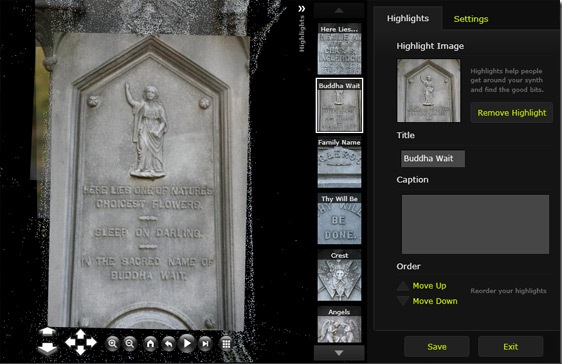 Crunch Network: CrunchGear drool over the sexiest new gadgets and hardware. |
| You are subscribed to email updates from TechCrunch To stop receiving these emails, you may unsubscribe now. | Email delivery powered by Google |
| Inbox too full? | |
| If you prefer to unsubscribe via postal mail, write to: TechCrunch, c/o Google, 20 W Kinzie, Chicago IL USA 60610 | |
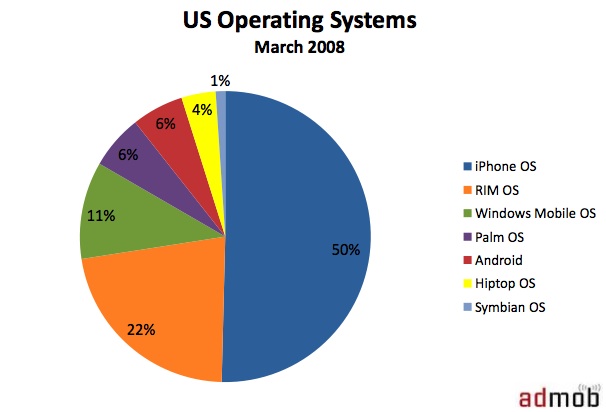
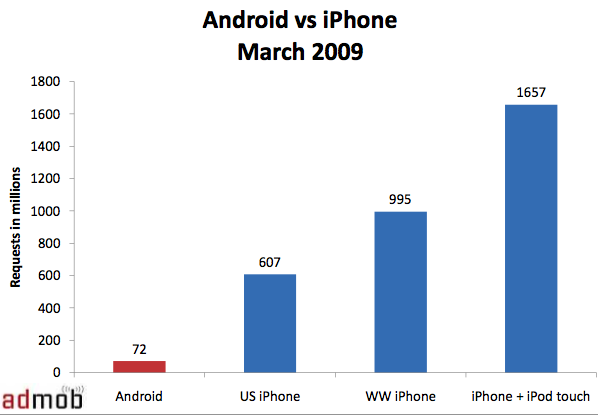
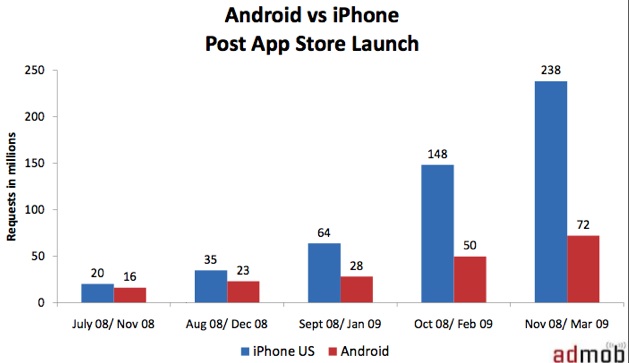

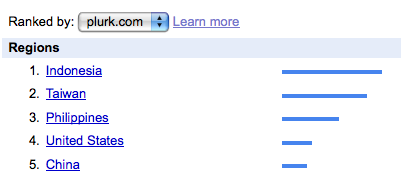
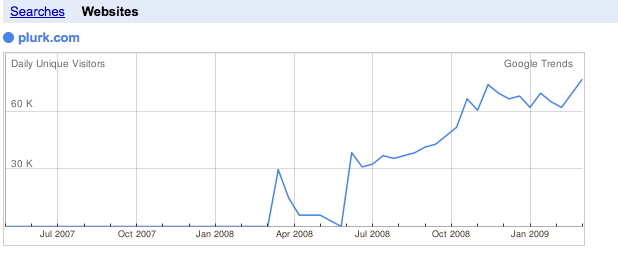
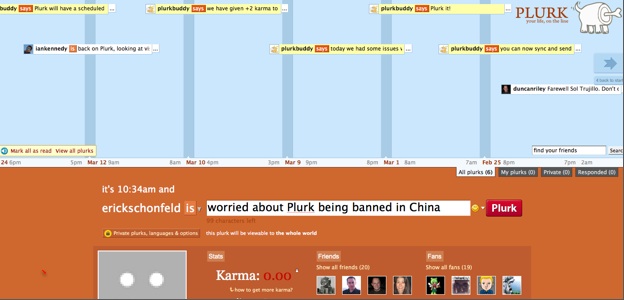

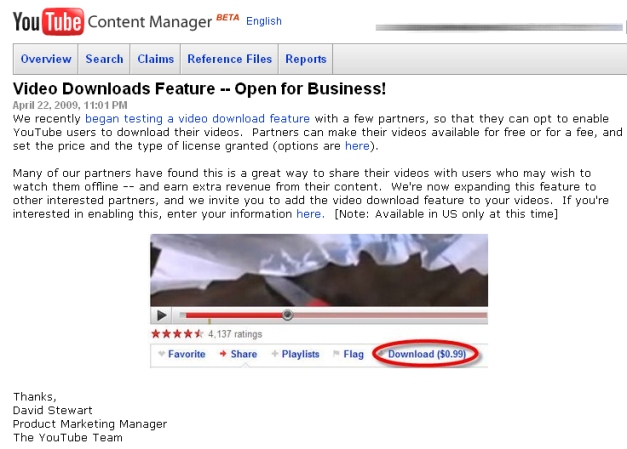
 Of the major companies that announced their earnings yesterday, two of them, AT&T and Apple,
Of the major companies that announced their earnings yesterday, two of them, AT&T and Apple, 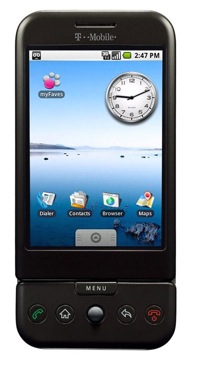 But the fact of the matter is, that iPhone is simply the best all-in-one device that I’ve ever owned. I cannot imagine my life without it now. I would be lost — sometimes literally — without it. I say that because I know that of the 21 million iPhone owners out there — there are a great deal who feel the exact same way. That may be annoying, and may even sound pretentious to those who don’t own an iPhone — but I’m giving you my honest take as someone who has owned and/or tried a lot of the so-called “smartphones” out there. I have a G1. I have a Nokia N95. I’ve used a number of Blackberry devices. None compare. And I think for a lot of the other devices, it actually speaks less to the iPhone itself and more to the shit products that the other mobile companies have gotten away with putting on the market for so long.
But the fact of the matter is, that iPhone is simply the best all-in-one device that I’ve ever owned. I cannot imagine my life without it now. I would be lost — sometimes literally — without it. I say that because I know that of the 21 million iPhone owners out there — there are a great deal who feel the exact same way. That may be annoying, and may even sound pretentious to those who don’t own an iPhone — but I’m giving you my honest take as someone who has owned and/or tried a lot of the so-called “smartphones” out there. I have a G1. I have a Nokia N95. I’ve used a number of Blackberry devices. None compare. And I think for a lot of the other devices, it actually speaks less to the iPhone itself and more to the shit products that the other mobile companies have gotten away with putting on the market for so long. Some developers say that if an app is made correctly, it shouldn’t drain a battery to such an extent even while running in the background. They often cite older Nokia phones and the like with applications as examples. But those older phones ran applications that are nowhere near as advanced as we have now in the post-iPhone world. If applications can be optimized for battery life, no one told the developers on the Android platform.
Some developers say that if an app is made correctly, it shouldn’t drain a battery to such an extent even while running in the background. They often cite older Nokia phones and the like with applications as examples. But those older phones ran applications that are nowhere near as advanced as we have now in the post-iPhone world. If applications can be optimized for battery life, no one told the developers on the Android platform.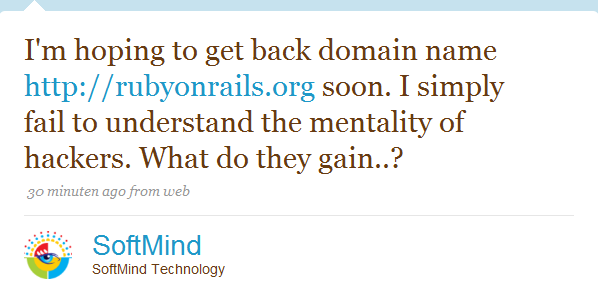
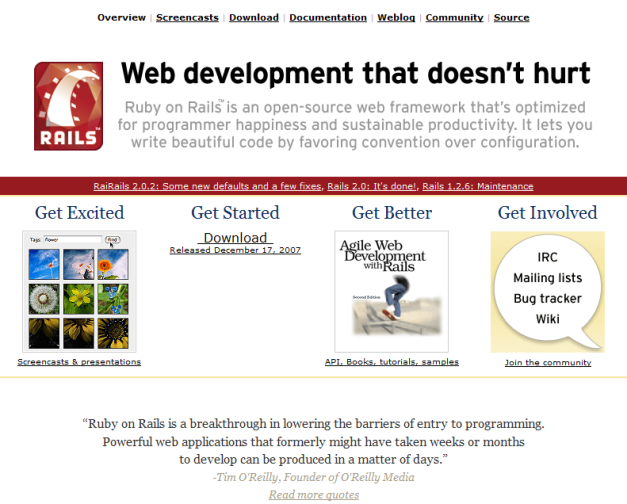
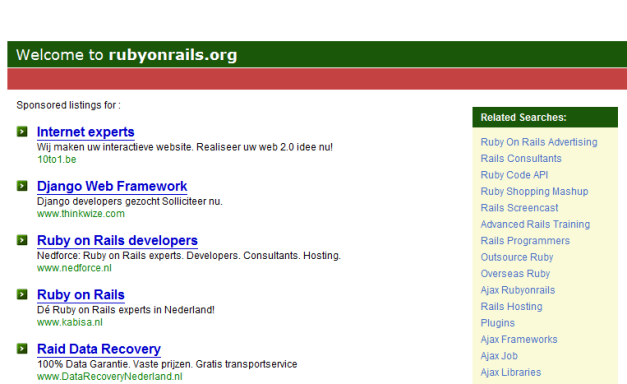

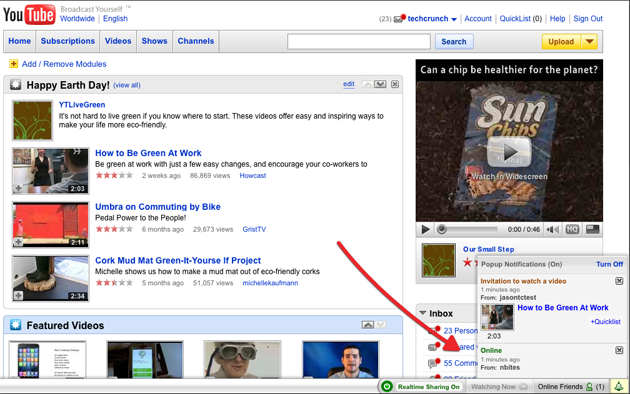
 Here’s the email that
Here’s the email that

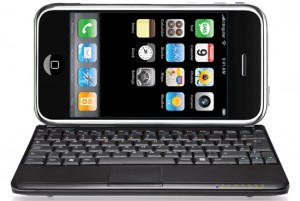 During its
During its 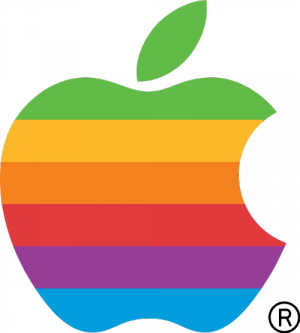 Apple has just released its second quarter financial
Apple has just released its second quarter financial  The
The 


No comments:
Post a Comment